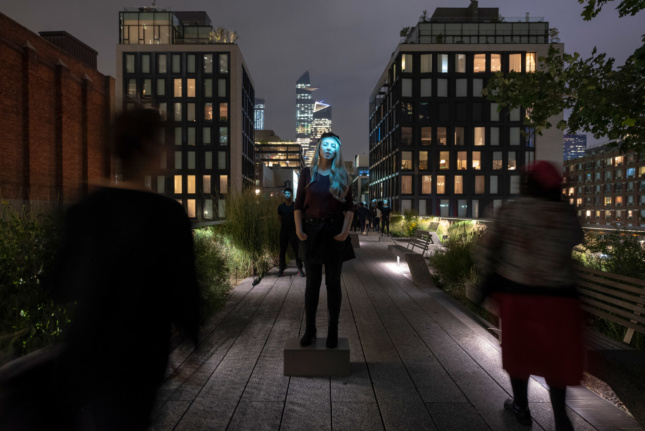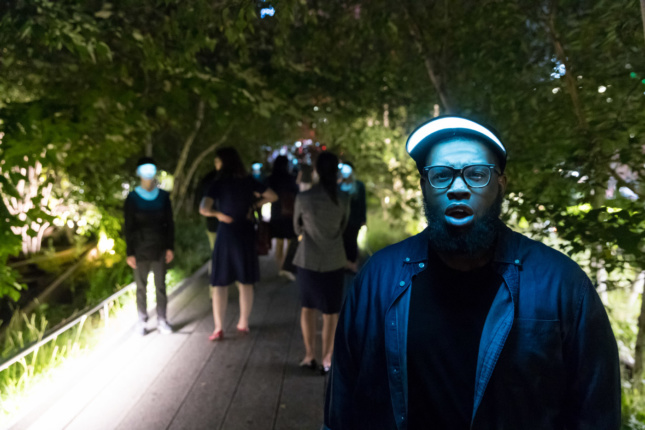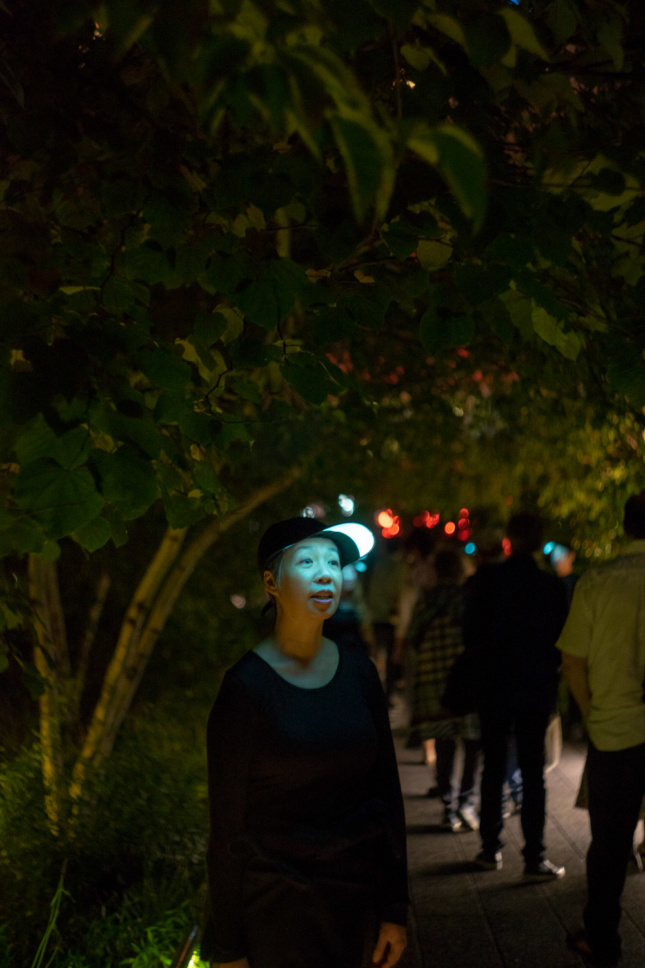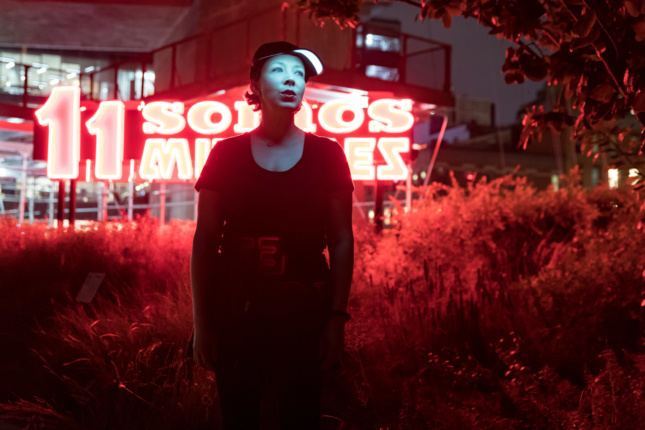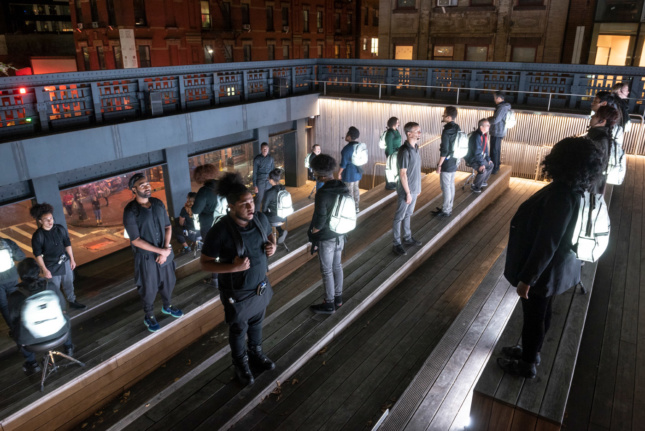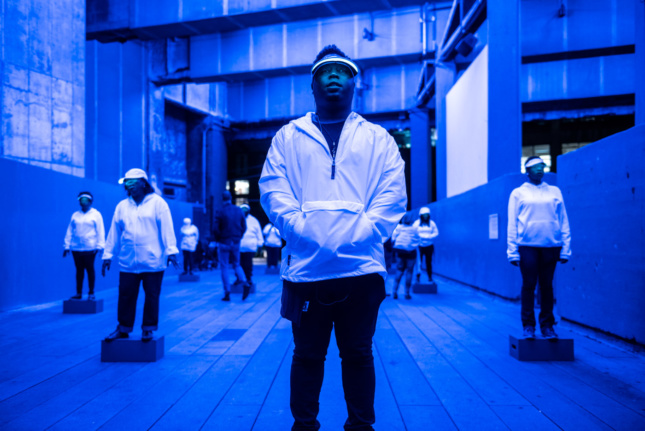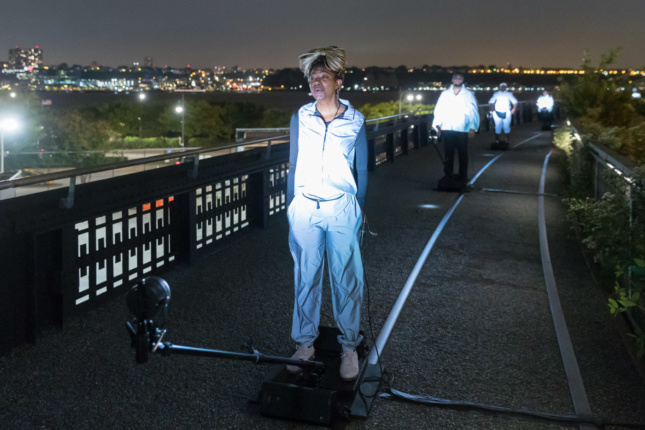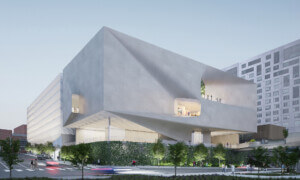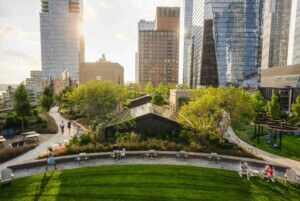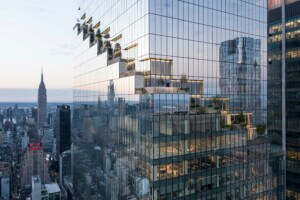As the sun sets each night over Manhattan’s High Line, the sounds of 1,000 opera singers waft through the streets of Chelsea, at least until October 8.
The Mile-Long Opera: a biography of 7 o’clock, a co-production between Pulitzer Prize-winning composer David Lang and Diller Scofidio + Renfro (DS+R), one part of the High Line’s design team, sets human-scale stories against the elevated park’s environs. Poets Anne Carson and Claudia Rankine provided the text for each of the opera’s 26 sections, which was distilled in part from interviews with New York City residents on what the twilight period means to them, and DS+R partner Elizabeth Diller directed the show’s staging.
The opera, a 90-minute linear amble from the High Line’s 14th Street entrance to its West 34th Street terminus, is in content, tone, and setting, about transition: the changing time of day, evolving domestic duties, and the shifting character of New York itself. Audience members are encouraged to walk slowly and weave their ways between the groups of singers, each belting out—or whispering, or chanting—their specific role on loop, unfolding the full experience for guests as they move forward.

With each performer cloaked in white light from a luminescent hat, smartphone, backpack, or other piece of everyday wear, the experience can feel at times dreamlike. But the surrounding sounds of the city, walls of new development around the High Line, and Hudson Yards’ looming presence on 34th Street ground the performers in a material setting.
Gentrification is not explicitly the Mile-Long Opera’s purview, but, as Diller recently relayed to the New York Times, the changes in the Meatpacking District (some caused by the High Line itself) are highlighted as wistful background threads. The mingling of old and new construction along the park with song lyrics about friends moving away, the L Train shutdown, and passing strangers on the street, are meant to make the audience consider change as a process and not simply get nostalgic for “the good old days.”

DS+R and Diller’s involvement in the show’s staging (choreographer Lynsey Peisinger served as co-director) shines through, as both are intimately familiar with the challenges and opportunities of staging a show on the High Line. Marriage proposals waft up from beneath the elevated walkway and flyover, and for the spiraling spur at the park’s end, which butts up against the West Side Highway and an active heliport, performers are clad in reflective jumpsuits and have their voices amplified, one of the only times they compete with the noises of the city. This push and pull of the city, according to Diller in the playbill, makes New York both a backdrop and an antagonist as the audience travels the 30-block-long urban stage.
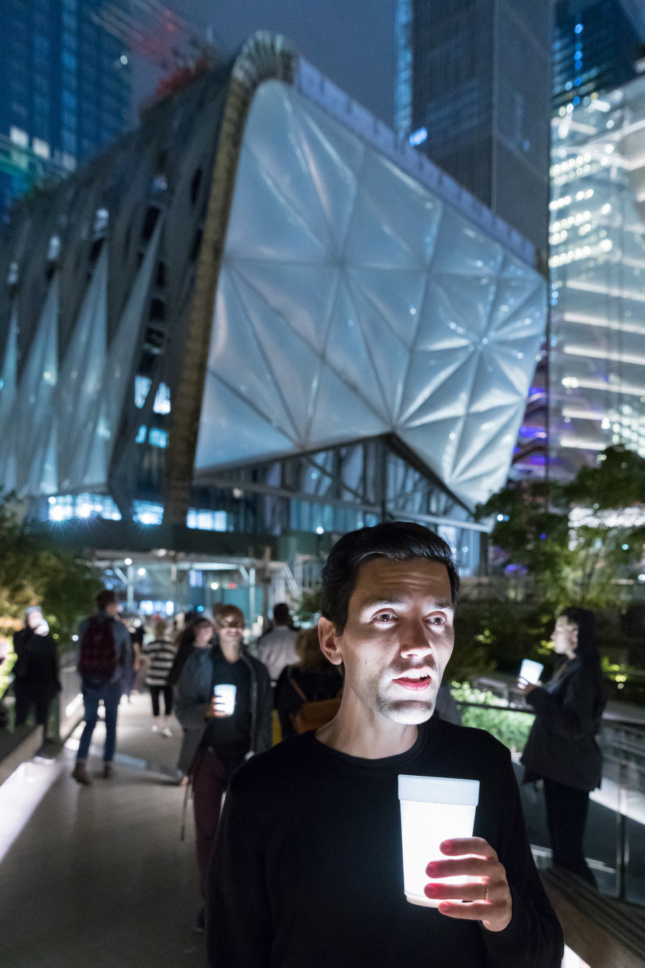
Standby tickets to the Mile-Long Opera are free, but for those who can’t make it before the show closes, a 360-degree virtual reality version of the performance is being uploaded in parts online.






